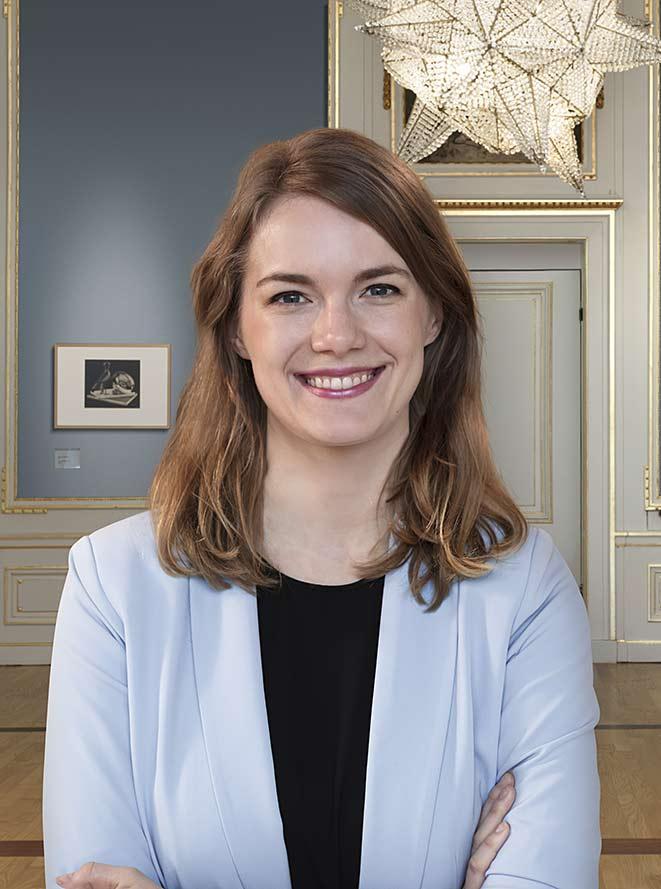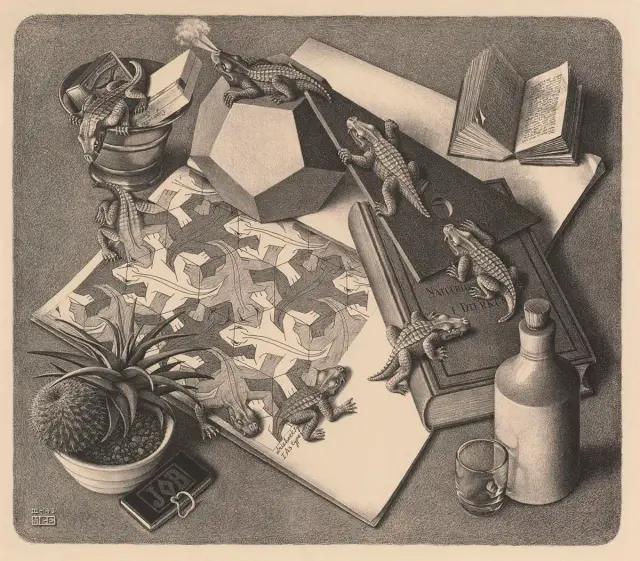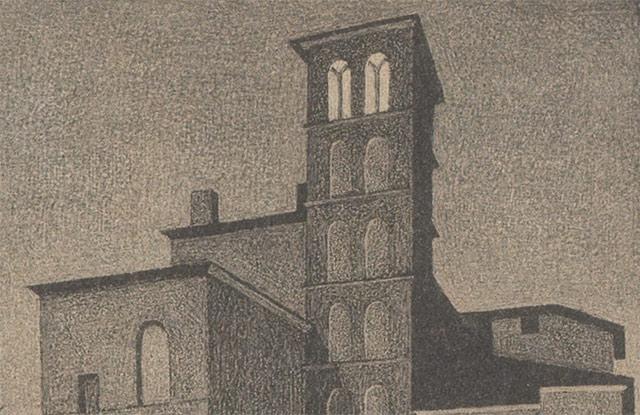Escher received this tableau in connection with a major commission: in the winter of 1959-60, he designed a tile tableau with fish and birds for a villa at Dirk Schäferstraat 59 in the south of Amsterdam. It was commissioned by Wolbert J. Vroom, a great admirer of Escher’s work, who was looking for a black-and-white image to decorate the facade of his newly built home.
Escher proposed to base the tableau on his print Sky and Water I (1938), in which fish gradually metamorphose into birds. The diamond-shaped design would introduce a diagonal dynamic to the modern villa’s orthogonal lines and Escher’s tessellations would lend themselves well to an arrangement of tiles. Escher soon enlisted the ceramics factory De Porceleyne Fles (now Royal Delft) to make the tiles. He had collaborated with them on tiled columns for the Johanna Westermanschool (now the Maris College) in The Hague and would do so again a decade later for a project at a secondary school in Baarn. After a process of several months, the tableau was delivered in the spring of 1960 and unveiled in the presence of the clients, the villa’s architect Lau Peters and Escher. The commissioned larger tableau can still be seen on the villa on Dirk Schäferstraat.
His enthusiasm for the end result is evident from the fact that he gladly received a smaller tableau from De Porceleyne Fles with the same tiles. In his letter to Mr Holland of De Porceleyne Fles, Escher wrote on 15 March 1960: ‘I also forgot to express my gratitude to you for having the small tableau put together. I am very pleased with it and look forward to seeing it!’ Escher gave this tableau a prominent place in his own studio, where it hung for many years and where he was photographed with it on several occasions. It also moved with him to the Rosa Spier Huis, the residential and working community for artists and academics in Laren, where he spent the last phase of his life.








